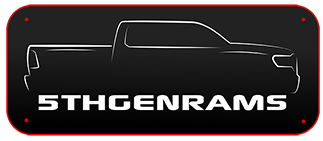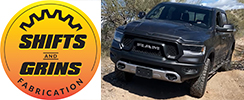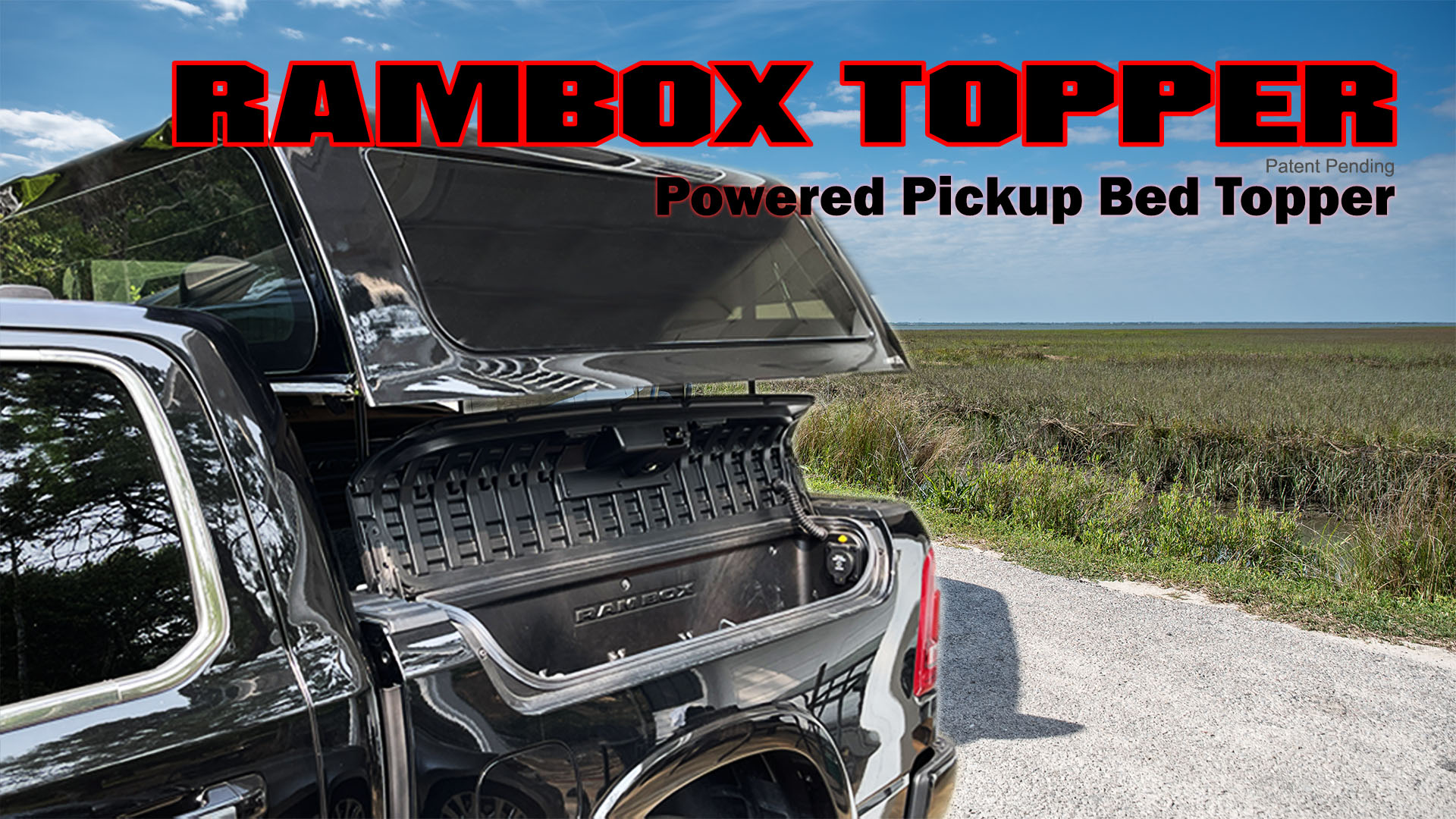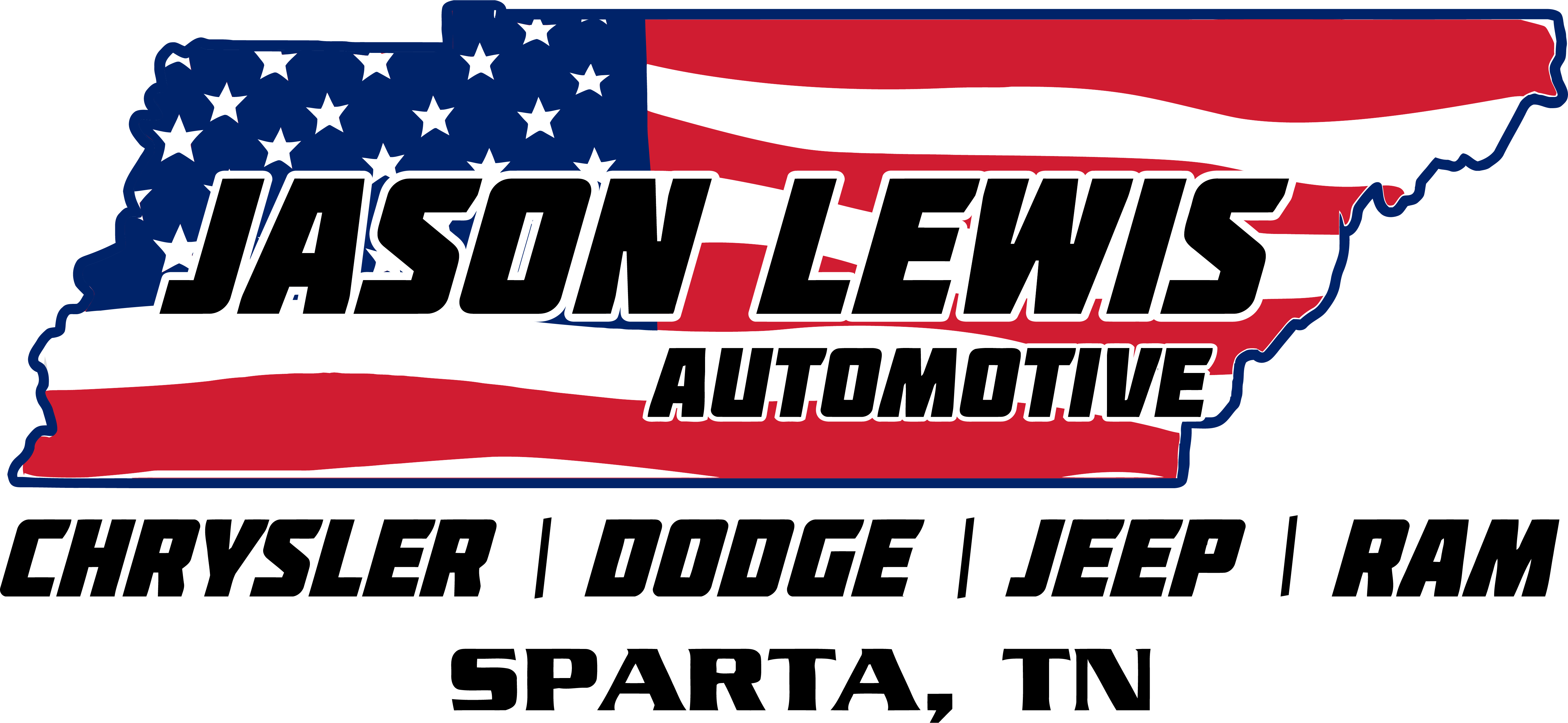5thGenRams Forums
You are using an out of date browser. It may not display this or other websites correctly.
You should upgrade or use an alternative browser.
You should upgrade or use an alternative browser.
What did you do to your Ram today???
- Thread starter 19BlkRam
- Start date
HemiDude
Spends too much time on here
Yesterday, swapped out the old PUP for new PUP. Still like that fumoto valve, and the puppy pads draped over the frame/etc saves clean-up from the filter change. Went further than I wanted to this time around (6k miles) but just haven't been able to get to it till now. CC was about half full, always amazes me how much oil winds up there.
rotwiler
Active Member
Installed energy poly front swaybar bushings, some patriotic decals, being a vet I always have to add some type flag stuff to truck. Getting ready to go on Long trip with my travel trailer this weekend. Put see through flag on sliding windows, AR decal, front Ram waving flag decal. Trying to keep the white/black theme. I also installed a 70 inch led strip on hood, but I messed up first time, then realized the led strip is only bright on 1 edge, so looks really dim.
Attachments
MattG31
Active Member
- Joined
- Jul 12, 2025
- Messages
- 26
- Reaction score
- 16
- Points
- 3
- Age
- 56
- Location
- Wilkes Barre Pennsylvania
The transmission is now in the 130 degree area. Also I flushed out the zf 8&9 speed trans fluid for amsoil fluid. That was changed out about 53k miles ago. Forgot to mention that. Next will be a large trans cooler. The truck is not tuned yet, I want to get it mechanically the way I want then tune it.WhT temperatures are you seeing in your transmission? When you installed the 180 thermostat, did you get a custom tune to allow the fans to turn on sooner and also adjust the timing and fueling accordingly?
There isn't a really a transmission "heater". Looking at my truck the transmission lines run straight to a trans cooler that is the top part of A/C condenser. They don't even go through the radiator like traditional factory set ups. The thermal bypass is only thing that controls transmission temperature from running too cold. Which you said you already bypassed . You want your transmission running between 160-180 preferably . But don't really want to see about 200 degrees. I haven't towed in a while but normal driving mine never gets above 185. When slow moving on off road trails, I have seen 215. I also have the Vararam intake which partially blocks the trans cooler at the top.
130 trans fluid temp is way too low. Any trans builder will tell you 160-180 is ideal range for fluid temp to allow for proper shifting and burn off condensateThe transmission is now in the 130 degree area. Also I flushed out the zf 8&9 speed trans fluid for amsoil fluid. That was changed out about 53k miles ago. Forgot to mention that. Next will be a large trans cooler. The truck is not tuned yet, I want to get it mechanically the way I want then tune it.
MattG31
Active Member
- Joined
- Jul 12, 2025
- Messages
- 26
- Reaction score
- 16
- Points
- 3
- Age
- 56
- Location
- Wilkes Barre Pennsylvania
Well you're talking to one. The trans is shifting exactly the same as before. I had to Google it, condensation will evaporate at any temp over 32 degrees F. I'm sure with conditions tho.
Speed of evaporation obviously changes with higher temps. The fluid is designed to operate at certain temps and clutches inside transmission need fluid at correct temp to work properly. As Scram said, too cold of fluid is just as bad for the transmission as too hot.Well you're talking to one. The trans is shifting exactly the same as before. I had to Google it, condensation will evaporate at any temp over 32 degrees F. I'm sure with conditions tho.
MattG31
Active Member
- Joined
- Jul 12, 2025
- Messages
- 26
- Reaction score
- 16
- Points
- 3
- Age
- 56
- Location
- Wilkes Barre Pennsylvania
Very true, but I've never seen a transmission get damaged because of cooler Temps but have seen plenty damaged by hotter Temps.Speed of evaporation obviously changes with higher temps. The fluid is designed to operate at certain temps and clutches inside transmission need fluid at correct temp to work properly. As Scram said, too cold of fluid is just as bad for the transmission as too hot.
StuartV
Ram Guru
Hmm. This is all sounding so familiar...
MattG31
Active Member
- Joined
- Jul 12, 2025
- Messages
- 26
- Reaction score
- 16
- Points
- 3
- Age
- 56
- Location
- Wilkes Barre Pennsylvania
Well no one can say what will happen at a lower temp, I can't even say because I haven't tried it. I know what the design is and how it works. Take any recall or tsb for any part or system, is the recall or tsb wrong because it was designed the way it was?
StuartV
Ram Guru
Well no one can say what will happen at a lower temp, I can't even say because I haven't tried it. I know what the design is and how it works. Take any recall or tsb for any part or system, is the recall or tsb wrong because it was designed the way it was?
I know my tires don't stick as well when they're not at the temp they were designed for.
And the oil in my engine is not the same viscosity when it's at the temp it was intended to operate at versus a much lower temperature.
Do you think the friction plates (or whatever they're called) in a transmission have the correct friction and wear at the same rate when they are at their operational design temperature versus a much lower temperature?
CHeYeNNe71
Spends too much time on here
Also knowing all the computers on these vehicles now days, if they don't see a certain setting, will they shift correctly or at all over time?I know my tires don't stick as well when they're not at the temp they were designed for.
And the oil in my engine is not the same viscosity when it's at the temp it was intended to operate at versus a much lower temperature.
Do you think the friction plates (or whatever they're called) in a transmission have the correct friction and wear at the same rate when they are at their operational design temperature versus a much lower temperature?
MattG31
Active Member
- Joined
- Jul 12, 2025
- Messages
- 26
- Reaction score
- 16
- Points
- 3
- Age
- 56
- Location
- Wilkes Barre Pennsylvania
Yes, a clutch plate has been the same for as long as I've been building transmissions. They are a organic material. A clutch pack is made to slip as its applied, that gives a less harsh shift. But also causes heat and wear by the slip. When people say they put a shift kit in or now with computers controlling the shifts all they are doing is speeding up the shift so the clutch pack applies faster, the hardness of a shift is a byproduct of the faster shift. But the faster is shifts makes less heat and wear.I know my tires don't stick as well when they're not at the temp they were designed for.
And the oil in my engine is not the same viscosity when it's at the temp it was intended to operate at versus a much lower temperature.
Do you think the friction plates (or whatever they're called) in a transmission have the correct friction and wear at the same rate when they are at their operational design temperature versus a much lower temperature?
stevieb92
Active Member
- Joined
- Jan 29, 2021
- Messages
- 192
- Reaction score
- 483
- Points
- 63
- Age
- 51
Yes, a clutch plate has been the same for as long as I've been building transmissions. They are a organic material. A clutch pack is made to slip as its applied, that gives a less harsh shift. But also causes heat and wear by the slip. When people say they put a shift kit in or now with computers controlling the shifts all they are doing is speeding up the shift so the clutch pack applies faster, the hardness of a shift is a byproduct of the faster shift. But the faster is shifts makes less heat and wear.
Nailed it. I'm a former mechanic and now a mechanical engineer. These engines and trans running so hot from factory is purely a CAFE measure by Stellantis. They are the same people who will sell you a new trans when you burn it up from being too hot. I've got that bypass plug on my bench to install as well. I prefer cooler temps like you. I bet most of the naysayers here will freak out when they learn that the HD Rams do not have a trans oil heater on them. HD Rams are also exempt from mpg fleet regulations. When you put 2 and 2 together, you realize what's going on. Most guys I talk to say their trans runs about 180-190 when towing. I've got the Stant 180 thermostat in my Ram and it runs about 190 steadystate on the highway and bumps to 210 plus in stop and go traffic during summer months. Heat is also the enemy of batteries. Why are so many Ram owners experiencing battery failure? Hmmm...
MattG31
Active Member
- Joined
- Jul 12, 2025
- Messages
- 26
- Reaction score
- 16
- Points
- 3
- Age
- 56
- Location
- Wilkes Barre Pennsylvania
Also the cost of a new trans, now getting up to around $7k to $10k. I want it to run cooler and last longer.Nailed it. I'm a former mechanic and now a mechanical engineer. These engines and trans running so hot from factory is purely a CAFE measure by Stellantis. They are the same people who will sell you a new trans when you burn it up from being too hot. I've got that bypass plug on my bench to install as well. I prefer cooler temps like you. I bet most of the naysayers here will freak out when they learn that the HD Rams do not have a trans oil heater on them. HD Rams are also exempt from mpg fleet regulations. When you put 2 and 2 together, you realize what's going on. Most guys I talk to say their trans runs about 180-190 when towing. I've got the Stant 180 thermostat in my Ram and it runs about 190 steadystate on the highway and bumps to 210 plus in stop and go traffic during summer months. Heat is also the enemy of batteries. Why are so many Ram owners experiencing battery failure? Hmmm...
HandyCruiser
Well-Known Member
- Joined
- Jun 28, 2021
- Messages
- 285
- Reaction score
- 345
- Points
- 63
- Age
- 60
My wife and I decided that we really like the new truck. So we went ahead and got an extended Mopar Warranty from one of the two big online sellers. Much cheaper than getting it at the local dealership.
I don't figure we will keep this truck that long. But it's good to know it will be covered if we do.

I don't figure we will keep this truck that long. But it's good to know it will be covered if we do.

It's more than just speeding up the shifts, you also increase line pressure which applies more pressure on the clutches so they grab harder and don't slip as much. This is probably the more beneficial change for harder shift, and less clutch wear.Yes, a clutch plate has been the same for as long as I've been building transmissions. They are a organic material. A clutch pack is made to slip as its applied, that gives a less harsh shift. But also causes heat and wear by the slip. When people say they put a shift kit in or now with computers controlling the shifts all they are doing is speeding up the shift so the clutch pack applies faster, the hardness of a shift is a byproduct of the faster shift. But the faster is shifts makes less heat and wear.
MattG31
Active Member
- Joined
- Jul 12, 2025
- Messages
- 26
- Reaction score
- 16
- Points
- 3
- Age
- 56
- Location
- Wilkes Barre Pennsylvania
Very true, I just gave a very basic explanationIt's more than just speeding up the shifts, you also increase line pressure which applies more pressure on the clutches so they grab harder and don't slip as much. This is probably the more beneficial change for harder shift, and less clutch wear.
These transmissions don't run hot. Not sure what you are even talking about with that. Mine runs between 170-190 daily driving. And the only time it gets over 185 is in slower speeds when there isn't as much airflow. The engineers don't want the transmissions running hot because it shortens the life, and would actually increase emissions by having more slip and higher engine RPMs.Nailed it. I'm a former mechanic and now a mechanical engineer. These engines and trans running so hot from factory is purely a CAFE measure by Stellantis. They are the same people who will sell you a new trans when you burn it up from being too hot. I've got that bypass plug on my bench to install as well. I prefer cooler temps like you. I bet most of the naysayers here will freak out when they learn that the HD Rams do not have a trans oil heater on them. HD Rams are also exempt from mpg fleet regulations. When you put 2 and 2 together, you realize what's going on. Most guys I talk to say their trans runs about 180-190 when towing. I've got the Stant 180 thermostat in my Ram and it runs about 190 steadystate on the highway and bumps to 210 plus in stop and go traffic during summer months. Heat is also the enemy of batteries. Why are so many Ram owners experiencing battery failure? Hmmm...
Do you even know why your engine temps get over 200 in stop and go traffic, even with your 180 stay? If not, then your opinion is useless. If you do know but haven't made the necessary changes to prevent that then once again, why should anyone listen to your advice? And what exactly is the purpose of using a 180 thermostat? I run them in my Dakotas using the old Magnum 5.9L engines because it helps prevent detonation on the hotter tunes I have. But that's a less efficient engine that is prone to hot spots in the block and heads. There is absolutely zero benefit in using one on the Hemi.
Users who are viewing this thread
Total: 4 (members: 0, guests: 4)
Members online
Total: 769 (members: 8, guests: 761)















